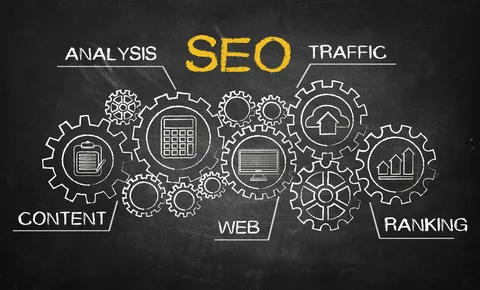Introduction: Design and SEO Go Hand in Hand
When people think about SEO (Search Engine Optimization), they often imagine keyword research, backlinks, and meta tags. While those are crucial, good web design plays an equally important role in boosting your site’s visibility on search engines. In 2025, SEO is no longer just about text—it’s about the overall user experience. Search engines like Google have become smarter, rewarding websites that offer clean design, fast loading times, mobile responsiveness, and easy navigation. Let’s explore how smart, thoughtful web design can directly improve your SEO performance and help you rank higher.
Faster Load Times = Higher Rankings
Speed is a ranking factor. A well-designed website that’s optimized for performance will load faster, and faster websites keep users engaged. When your site is bloated with unnecessary scripts, uncompressed images, or outdated design practices, it slows everything down. Google’s algorithms detect this and rank your site lower. Clean code, lazy loading, optimized images, and minimal use of heavy plugins all contribute to better performance—and better SEO.
Mobile-Friendly Design is Non-Negotiable
In 2025, the majority of web traffic comes from mobile devices. Google now uses mobile-first indexing, which means it evaluates your website’s mobile version before the desktop version. If your website isn’t responsive or has design issues on small screens, your rankings will suffer. Good web design ensures that your layout, text, buttons, and navigation are all optimized for mobile users, which signals to Google that your site is worth recommending.
Better UX = Lower Bounce Rates
User experience (UX) is directly tied to SEO. If your design confuses users, makes them wait, or overwhelms them with clutter, they’ll leave—fast. This increases your bounce rate, which search engines interpret as a sign that your content isn’t valuable or relevant. On the other hand, good design guides users smoothly through your website, keeping them engaged and encouraging them to explore more pages. The longer people stay, the better your site performs in search.
Clear Structure Helps Search Engines Understand Your Site
A well-structured website with proper headings, logical layout, and internal linking helps both users and search engines. Google’s crawlers scan your site to understand its content and hierarchy. A messy design or poor structure can confuse crawlers and prevent your pages from being indexed properly. Using HTML5 elements, proper H1 to H3 tags, and a clear navigation system enhances crawlability and improves SEO.
Image Optimization and Visual SEO
Images are an important part of web design, and they can either help or hurt your SEO. Good design ensures that images are optimized for speed, properly named with descriptive file names, and include alt text. This not only improves loading time but also helps your site appear in Google Image Search, creating another traffic source.
Accessibility and SEO Alignment
Modern web design also focuses on accessibility—making your site usable for people with disabilities. Interestingly, many accessibility best practices also improve SEO. For example, descriptive link text, keyboard-friendly navigation, and alt attributes all help both users and search engines understand your content better.
Secure, Trustworthy Design Encourages Backlinks
A professional, secure-looking website builds trust. When people see that your website looks clean, updated, and credible, they’re more likely to share your content or link to it. Backlinks are a major factor in SEO, and design plays a subtle but important role in earning them. Would you link to a website that looks outdated or untrustworthy? Probably not—and neither will others.
Final Thoughts
SEO and web design are not separate silos—they work together. A beautiful website that performs poorly won’t rank, and an optimized site that’s ugly won’t convert. By combining good design with SEO best practices, you can create a website that not only looks amazing but also climbs the search rankings, attracts more traffic, and ultimately brings in more business. As a web developer, I always build with both humans and search engines in mind—because that’s where long-term success happens.

